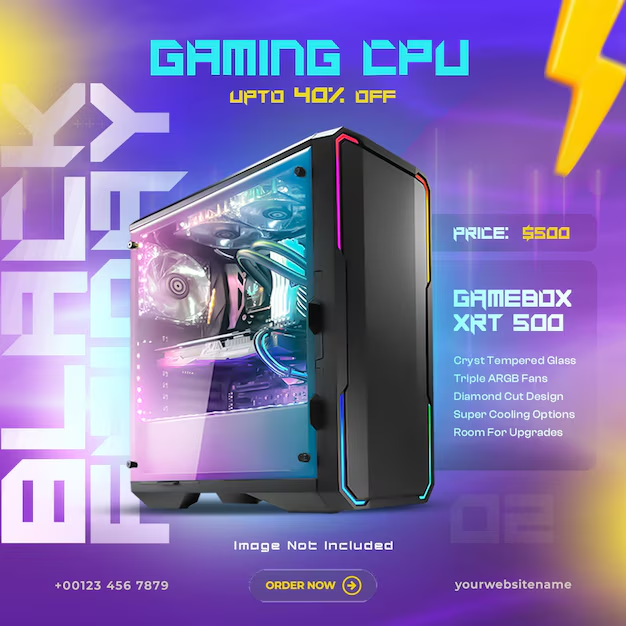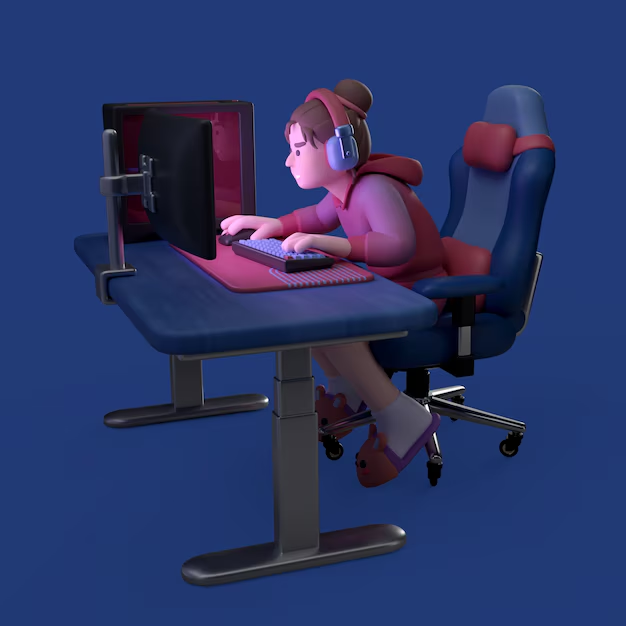How To Build a Gaming PC? Is it Cheaper to Build a Gaming PC Yourself?
Gaming world is evolving day by day. Building a gaming pc is both rewarding and an exciting experience. Unlike your pre-gaming system, assembling your own gaming equipment makes it easy to understand the gaming rules.
Building your own gaming pc makes it customized, better performance and often cost saving and more competitive then the other pcs. While a gaming PC is designed for playing video games, it is also a robust machine that can manage tasks like video editing, 3D rendering, and streaming. A gaming PC can provide high-resolution graphics, seamless gameplay, and a competitive advantage in online gaming with the appropriate components.
One of the major inquiries among gamers is if constructing a gaming PC is more cost-effective than purchasing a pre-assembled one. Although pre-assembled gaming PCs provide convenience and come with manufacturer warranties, they frequently entail extra costs and feature lower-quality components. Conversely, constructing a gaming PC on your own can offer better value since you have the option to select each component according to your individual needs.
This detailed guide of building your own PC , presented in a step-by-step format, will lead you through the process of building your own gaming PC, offering numerous tips and tricks from our experienced builders as you go. So, what are you waiting for? Let’s go and learn something new about building your own gaming pc.

Importance of Gaming PC:
Gaming PCs are built to manage high-performance gaming, video editing, and professional tasks. Below are several important advantages of owning a gaming PC:
- Outstanding Performance: Gaming PCs provide enhanced graphics, quicker frame rates, and a superior overall gaming experience in comparison to consoles.
- Upgradability: Unlike consoles, components like the graphics card, RAM, or storage can be easily upgraded.
- Customization: You have the option to build a PC tailored to your requirements, whether for gaming, streaming, or content creation.
- Multifunctionality: A gaming PC can serve for productivity tasks, programming, video editing, and various other activities.
How To Build a Gaming PC?
There is a step-by-step guide to build a Gaming PC. Let’s discuss it in detail:
- Prepare Your Workspace- Locate a tidy environment free of static, and ensure that it has sufficient space for you to assemble your PC. To avert electrostatic discharge that may harm components, use a wrist strap that is anti-static.
- Mount the CPU onto the Motherboard– Gently position the CPU in the socket of the motherboard, making sure to align the markers.
Secure it in position and use thermal paste if necessary (some coolers have paste applied already).
- Install RAM- Insert the RAM sticks into the designated motherboard slots. Ensure they click into place.
- Install the motherboard in the case Use the supplied screws to fasten the motherboard within the case.
- Mount the storage devices (HDD/SSD)
Fasten SSDs or HDDs in their assigned bays and link them to the motherboard with SATA cables.
- Install the GPU (Graphics Processing Unit)
Place the GPU into the motherboard’s PCIe slot and fasten it with screws.
If necessary, connect the power cables from the PSU.
- Connect Cables and Organize Wiring Affix all required cables, such as power, USB, and audio connectors.
Arrange the cables in a tidy manner to guarantee adequate airflow and cooling.
- Cooling Solutions- If using an air cooler, attach it to the CPU.
If using liquid cooling, mount the radiator and fans accordingly.
- Boot Up and Install the Operating System- Power on the PC and enter the BIOS to check that all components are detected.
Install Windows or your preferred OS using a USB drive.
Download and install necessary drivers for the GPU, motherboard, and peripherals.
Components of Building a Gaming PC:
Before building a gaming pc you have to gather some components that are:
- Processor (CPU) – The core component of your computer that manages all calculations. Common selections are AMD Ryzen and Intel Core series.
- Graphics Card (GPU) – Takes care of rendering games, images, and videos. The top choices are NVIDIA GeForce and AMD Radeon.
- Motherboard (MOBO) – Links all parts together. Make sure it works with your CPU and has sufficient ports for future upgrades.
- RAM (Memory) – Affects the speed of your system’s multitasking capabilities. For gaming, it is advisable to have at least 16GB.
- Storage (SSD/HDD) – Load times are quicker with SSDs (Solid State Drives) compared to conventional HDDs. The best solution is to combine both options.
- Power Supply Unit (PSU) – Supplies power to your system. Select a PSU that is certified at least 80+ Bronze for efficiency.
- Cooling System – Either air cooling or liquid cooling is needed to maintain optimal temperatures.
- PC Case – Houses all the components and affects airflow and aesthetics.
- Operating System (OS) – Windows is the most commonly used OS for gaming, though Linux is also an option.

Is It Cheaper To Build a Gaming PC Yourself?
While constructing a gaming PC on your own can be more cost-effective, it relies on various factors:
Advantages of Building a Gaming PC Yourself:
- Benefits of Creating Your Own PC Improved Cost-Effectiveness – You have the option to select components according to your financial plan and performance requirements.
- Steering clear of pre-built markups – Pre-assembled PCs usually involve extra expenses for assembly, support, and branding.
- Customizability – Instead of replacing the whole system, you can upgrade specific components over time.
- Parts of Superior Quality – In order to reduce expenses, certain pre-assembled PCs utilize components of inferior quality.
Disadvantages of Building a Gaming PC Yourself:
- Initial Cost Can Be Higher – Purchasing each component separately can occasionally lead to a higher upfront cost.
- No Manufacturer Warranty on Assembly – Although individual components are covered by warranties, a pre-assembled system typically comes with a full-system warranty.
- Technical Knowledge Required – Research and troubleshooting skills are necessary for assembling a PC.
Cost Comparison: Ready-Made vs. Do-It-Yourself Construction
The price of a mid-range pre-assembled gaming PC can be approximately $1,200 to $1,500.
A DIY gaming PC with comparable specifications may cost between $1,000 and $1,300, but it features higher-quality components and greater upgrade potential.
As long as you are at ease with the assembly process, building your own PC is generally more cost-effective and advantageous over time.
Conclusion:
Constructing a gaming PC is an excellent method for achieving top performance and cutting costs. It provides complete customization, improved upgrade possibilities, and the gratification of building your own high-performance machine. Although pre-assembled PCs are convenient, custom builds offer superior value and serve as better long-term investments.
If you are a newcomer to assembling PCs, don’t let it frighten you. Many resources, such as video tutorials and online communities, are available to help you navigate the process. With a careful selection of components and adherence to assembly instructions, you can construct a robust gaming PC tailored to your precise requirements.